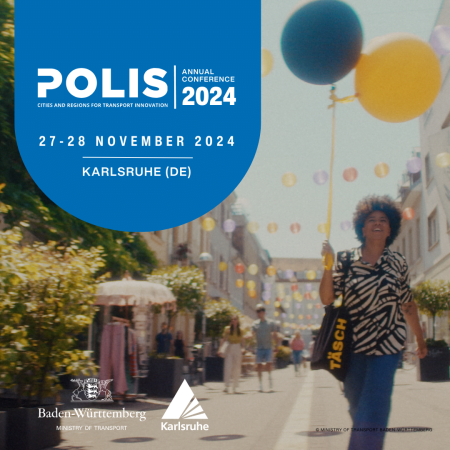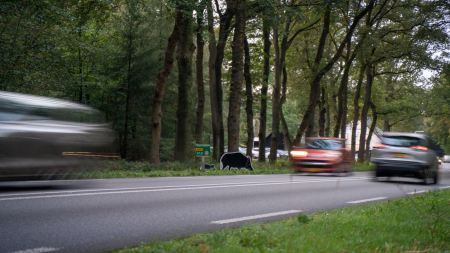Create awareness

Monday, June 17, 2024
The main challenge is the reduction of road accidents as a function of driving behavior. In recent years, significant progress has been made and the rate of accidents has decreased, but further improvement is needed in drivers behavior and at the same time in the infrastructure which is already extremely improved. For this reason, we created the safe cycling training program to train future drivers: the children, in order to become responsible drivers in the future

Monday, June 17, 2024
Our experience shows that most road accidents are caused by human error. Various analyses carried out by ALSA show that most road accidents are caused by inappropriate driver behaviour.
In order to manage road safety proactively, it is necessary to have a detailed and rigorous knowledge of the performance and behaviour of each driver in order to know their skills and behaviours, as well as to track their evolution over time.
To this end, ALSA has invested in technology in more than 3,700 vehicles in Spain that allows us to measure speeding, monitor various parameters that reflect driving style and detect various driver behaviours using innovative smart camera technology.
These smart cameras are based on "machine vision” and "artificial intelligence" (MV+IA) systems, which allow us to detect 40 types of driver behaviour and are particularly noteworthy for their innovation.
The data provided by the aforementioned technologies is used to calculate the risk profile of each driver. ALSA defines personalised actions for each driver: training, assignment to certain vehicles and routes, greater follow-up and monitoring, etc.
In addition, each driver has access to the data available on their own performance through an internal app (called "MiAlsa"). In this way, drivers can consult information on their own performance (consumption, driving styles, speeding, incidents, etc.).
In order to manage road safety proactively, it is necessary to have a detailed and rigorous knowledge of the performance and behaviour of each driver in order to know their skills and behaviours, as well as to track their evolution over time.
To this end, ALSA has invested in technology in more than 3,700 vehicles in Spain that allows us to measure speeding, monitor various parameters that reflect driving style and detect various driver behaviours using innovative smart camera technology.
These smart cameras are based on "machine vision” and "artificial intelligence" (MV+IA) systems, which allow us to detect 40 types of driver behaviour and are particularly noteworthy for their innovation.
The data provided by the aforementioned technologies is used to calculate the risk profile of each driver. ALSA defines personalised actions for each driver: training, assignment to certain vehicles and routes, greater follow-up and monitoring, etc.
In addition, each driver has access to the data available on their own performance through an internal app (called "MiAlsa"). In this way, drivers can consult information on their own performance (consumption, driving styles, speeding, incidents, etc.).

27 November 2024 09:00 – 28 November 2024 09:00
Messe Karlsruhe
Germany

Monday, June 17, 2024
Nature in Gelderland is thriving, with a growing number of wild animals. This is a beautiful phenomenon, but unfortunately, it also brings an increased risk of accidents involving wild animals. The chances of a poor outcome for the animal are high, but there is also a significant risk of material damage and severe consequences for the driver. The risk of collisions with wildlife is especially higher during certain periods, specific times, and at certain locations. Think of dawn and dusk, and the transition to winter or summer time.
In the past, the Province of Gelderland has taken various measures by adjusting the infrastructure and influencing the behavior of wild animals. Examples of these measures include the installation of warning signs, wildlife grids, and boar disappearance blocks. However, it turns out that more is needed to tackle the problem.
Drivers often underestimate the risk of animals being along the roads in the forests. Despite the recommended speed limits, they often drive too fast and are not always aware of the risk of animals along the roads. Therefore, the province of Gelderland wants to place more emphasis on the behavior of road users. In response to this need, creative behavioral agency andc and behavioral agency Dijksterhuis and Van Baaren have developed a behavior-oriented approach, including interventions, to encourage road users to adhere to the recommended speed limits.
In the past, the Province of Gelderland has taken various measures by adjusting the infrastructure and influencing the behavior of wild animals. Examples of these measures include the installation of warning signs, wildlife grids, and boar disappearance blocks. However, it turns out that more is needed to tackle the problem.
Drivers often underestimate the risk of animals being along the roads in the forests. Despite the recommended speed limits, they often drive too fast and are not always aware of the risk of animals along the roads. Therefore, the province of Gelderland wants to place more emphasis on the behavior of road users. In response to this need, creative behavioral agency andc and behavioral agency Dijksterhuis and Van Baaren have developed a behavior-oriented approach, including interventions, to encourage road users to adhere to the recommended speed limits.

Monday, June 17, 2024
The ultimate road safety problems addressed by the LEARN! project are the road deaths and injuries among children, with the project’s aim to address this problem through improving traffic safety and mobility education in Europe. The LEARN! project contributes to addressing this road safety problem by focusing on the challenges faced by road safety education professionals. During the first European Traffic Education Seminar in 2017, the attending professionals identified several challenges. Firstly, as also confirmed in the LEARN! Status Report, there are vast differences in the quality as well as quantity of the road safety education received by children across Europe, both in terms of differences between countries and between levels of education. Secondly, the lack of a common European terminology and methodology for educational activities on road safety, which was a barrier to learn from, compare and discuss educational projects and activities from different parts of Europe. Thirdly, the lack of a European platform where experts and professionals could exchange, share and learn about best practices related to the improvement and implementation of road safety education, innovative and effective educational projects, as well as discuss common challenges with colleagues from across Europe. Starting in 2018, the LEARN! project addresses those challenges through the activities mentioned in point 4.1. Moreover, it has addressed and keeps addressing additional challenges that have been identified over the years, including specific problems that experts from across Europe identified as common when implementing road safety education in schools, as well as ‘thematic’ challenges (e.g. synergizing with sustainable mobility education).

Sunday, June 16, 2024
The key objective is to improve the safety of learner drivers and provide a safe driving environment in which learners can practice safe driving skills. In primary research undertaken in 2018, 31% of Advanced Driving Instructors (ADIs) surveyed agreed that the Essential Driver Training programme (EDT) in Ireland did not provide a safe driving environment for learner drivers. Although it is illegal, driving unaccompanied is regularly done by a large percentage of learner drivers. As part of Phase 1 of the Road Safety Strategy (RSS) 2021-2024 a goal has been set to eliminate unaccompanied driving in Ireland by Q4 2024. The Behaviours and Attitudes Survey (2019) found 39% of learner drivers drive unaccompanied. In 2022, 5,929 learner drivers received penalty points for driving unaccompanied.
Ireland has a population of 5.5 million people, on average per year we have 11 fatalities and 45 serious injuries from road collisions with drivers pre-test (2007-2021 data). 80% of fatal collisions involved learner drivers who were driving unsupervised, while 75% of serious injury collisions involved unsupervised learner drivers. We know from research undertaken that collisions involving learner drivers reduce by 80% whilst accompanied. No one should die while learning to drive.
Ireland has a population of 5.5 million people, on average per year we have 11 fatalities and 45 serious injuries from road collisions with drivers pre-test (2007-2021 data). 80% of fatal collisions involved learner drivers who were driving unsupervised, while 75% of serious injury collisions involved unsupervised learner drivers. We know from research undertaken that collisions involving learner drivers reduce by 80% whilst accompanied. No one should die while learning to drive.

Sunday, June 16, 2024
In the Netherlands cycling is the most important way of daily transportation. Sadly, over the past 10 years the amount of bicycle casualties in the Netherlands has increased by 40%, which is expected to increase even more by the popularity of the E-bike. In 2023, 71.000 cyclists were treated in hospitals (60% of all traffic casualties) with 12.500 having traumatic brain injury (16%). Traumatic brain injury often leads to permanent disability as neurons have no or just little recovery potential. A very simple and effective intervention is the voluntary promotion of bicycle helmet with estimated reduction of death 70% and brain injury by 60%. In Denmark, voluntary promotion of bicycle helmets has been very effective in reducing the amount of casualties, especially in children. When we started in 2022 with the first National Day of the bicycle helmet only 2% of the Dutch cyclists were wearing helmets.

Sunday, June 16, 2024
The main road safety challenge was enforcement of the current European & National legislations.
The install of Vision Heroes Lighting Kit enhances the rear of an LCV (trailers with drop sides or pick up units with drop sides) it greatly improves the presence of units parked with the Original equipped (O/E) rear lamps lit* and the rear doors open to 90’.
This includes rear taillights, Turn Signal & Hazzard’s which are all incorporated within the O/E Lamps.
The install of Vision Heroes Lighting Kit enhances the rear of an LCV (trailers with drop sides or pick up units with drop sides) it greatly improves the presence of units parked with the Original equipped (O/E) rear lamps lit* and the rear doors open to 90’.
This includes rear taillights, Turn Signal & Hazzard’s which are all incorporated within the O/E Lamps.

Sunday, June 16, 2024
From the first of September 2022, MKIF Magyar Koncessziós Infrastruktursa Fejlsztó Zrt took over the operation, maintenance and development of 1,237 km of existing Hungarian expressways.
When analyzing the accidents recorded by our traffic surveillance cameras on domestic expressways, we noticed that it is important to draw attention to traffic safety in our communication (keeping a following distance, observing the speed limit near work areas, protecting our colleagues, early education of children/young adults in safe traffic) and traffic -culture (littering, driving in an egoistic style that endangers others, early education of children/young adults on responsible driving).
When analyzing the accidents recorded by our traffic surveillance cameras on domestic expressways, we noticed that it is important to draw attention to traffic safety in our communication (keeping a following distance, observing the speed limit near work areas, protecting our colleagues, early education of children/young adults in safe traffic) and traffic -culture (littering, driving in an egoistic style that endangers others, early education of children/young adults on responsible driving).

Sunday, June 16, 2024
In Vienna most parents are afraid to cycle with their kids on the streets because of the lack of proper and continuous infrastructure for bikes. This degenerates the ability of children in Vienna generally reaching an all time low of 17% of children taking a biking license and having over 50% of them fail in the exam due to lack of skill and practical knowledge about road behavior. This further decreases the biking competency of children in secondary school as they don’t have any motivation whatsoever to actually learn biking at a later age. With only 20 km per year of safe biking infrastructure generated and a need for over 300km this creates a gap of centuries while parents wait for safe infrastructure during which biking competencies further deteriorate. the bikebus (Bicibus) provides a method to engage children at the right age to motivate them for biking and educates parents by practicing and by positive example to actually provide a learning opportunity to children, when they actually are prone to learn biking seriously (5-10) This prepares their technical skills so they are ready, when their actual physiology is ready to safely travel through urban traffic alone even without safe infrastructure yet in place.